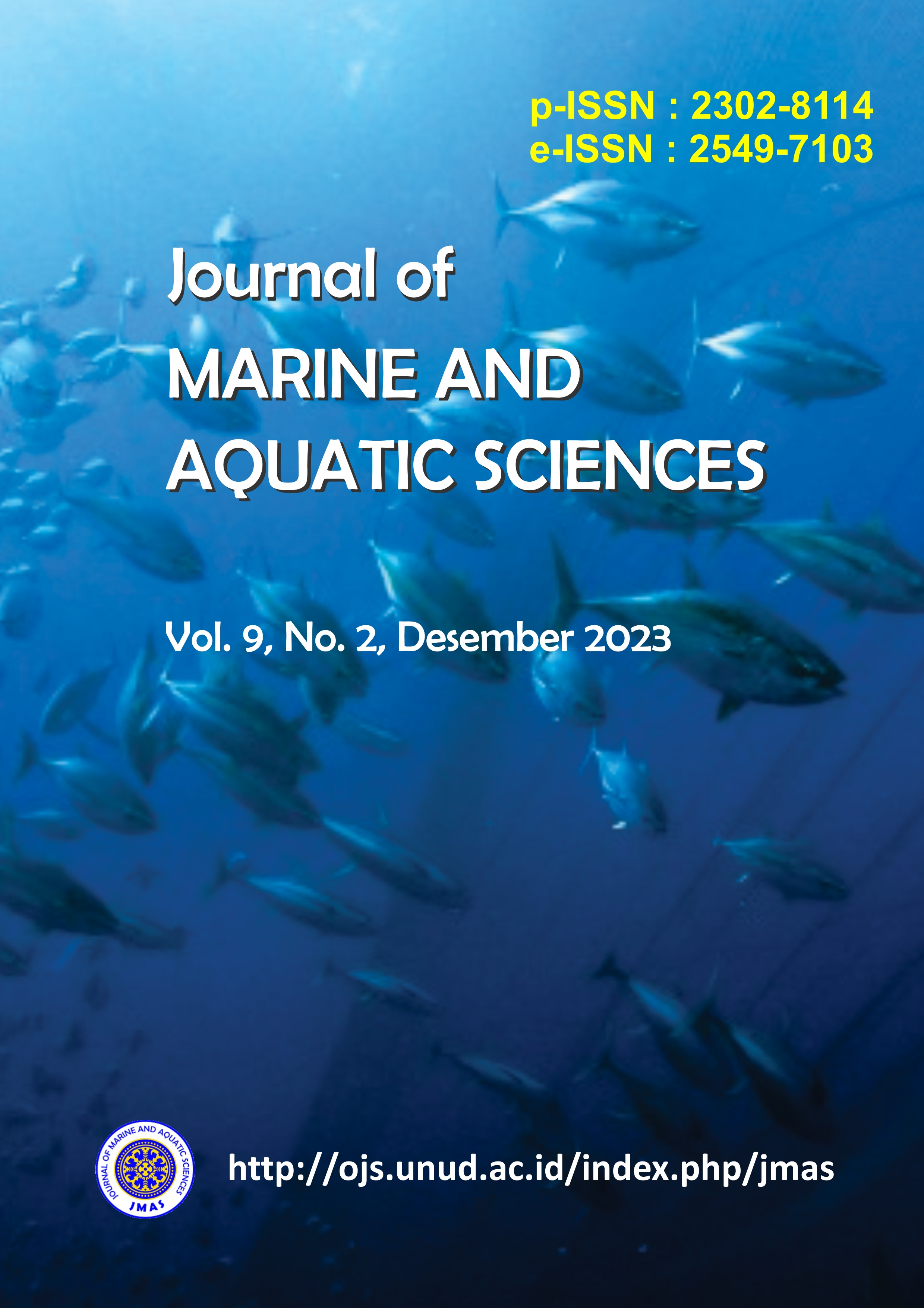Produktivitas Dan Laju Dekomposisi Serasah Mangrove Sonneratia Alba, Rhizophora Apiculata Dan Rhizophora Stylosa Di Taman Nasional Bali Barat
Abstract
Mangrove ecosystems produce litter and act as a source of detritus. Mangrove litter will become organic material for the environment, which can indicate that the environmental conditions are fertile. The mangrove environment is fertile, which makes the chain of life. The fallen litter then enters the decomposition process assisted by organisms such as macrozoobenthos and several other animals. In the decomposition process there are several influencing factors such as sunlight, water, substrate and other natural factors. The purpose of this study was to determine which litter productivity and decomposition rate was the highest from Sonneratia alba, Rhizophora apiculata and Rhizophora stylosa in West Bali National Park. This research was conducted for 2 months, starting in January 2021, by taking and measuring samples for 2 weeks. The method of determining the point using purposive sampling. Data analysis for litter productivity by calculating the average dry weight of litter (after oven) and decomposition rate with litter reduction every week (after oven). Productivity Sonneratia alba (3.33 g/week), Rhizophora apiculata (3.83 g/week), Rhizophora stylosa (3.05 g/week). Decomposition rate of Rhizophora stylosa (1.85 g/week), Sonneratia alba (1.71 g/week), and Rhizophora apiculata (1.39 g/week).
Downloads

This work is licensed under a Creative Commons Attribution 3.0 International License.
Copyright 2012 - 2023 Journal of Marine and Aquatic Sciences (JMAS)
Published by Fakultas Kelautan dan Perikanan Universitas Udayana, Denpasar, Bali, Indonesia
JMAS (p-ISSN 2302-8114; e-ISSN 2549-7103)


